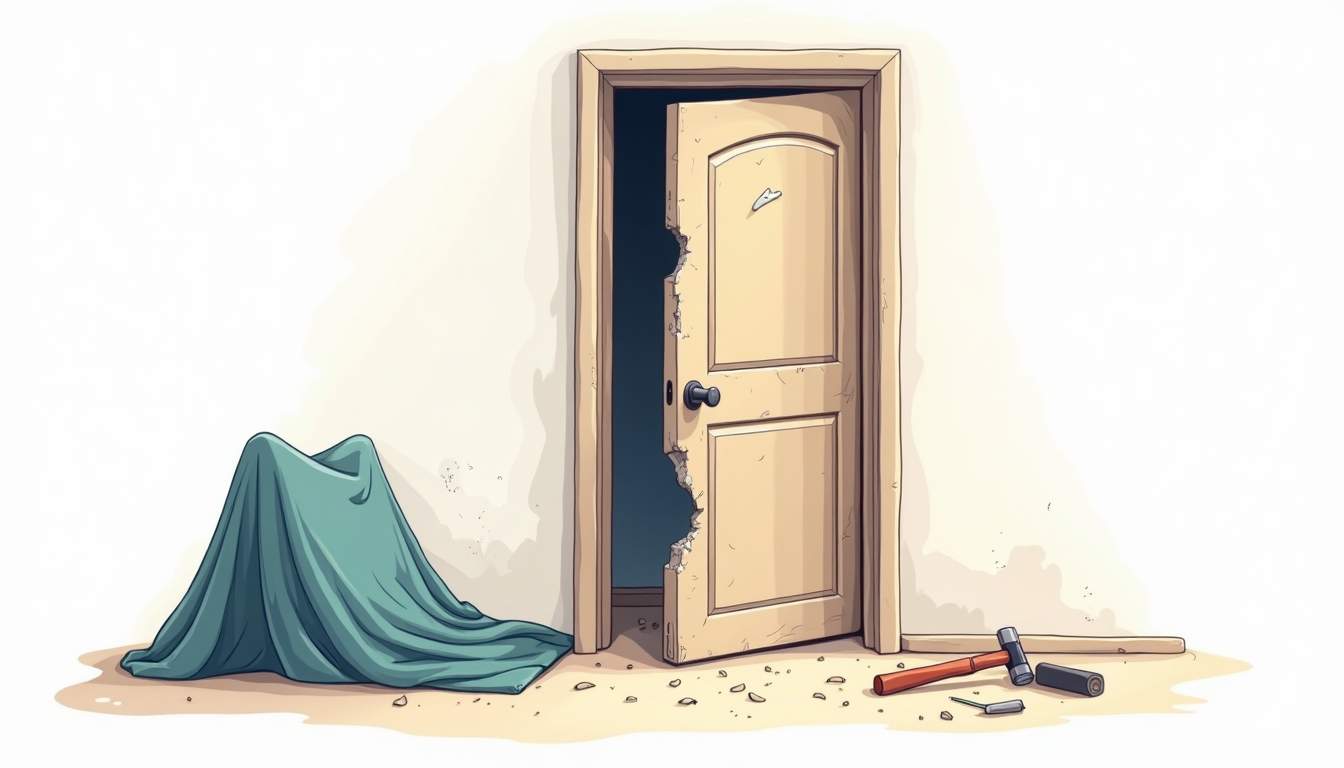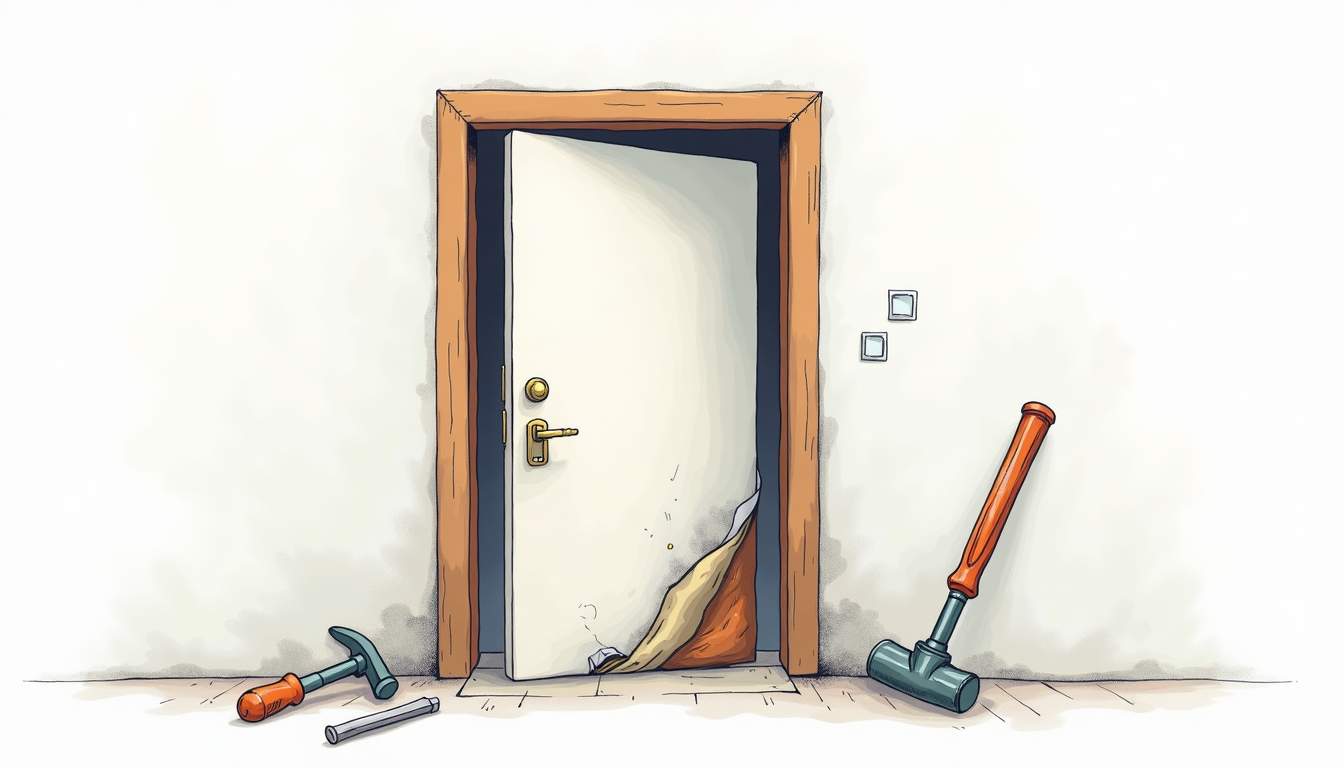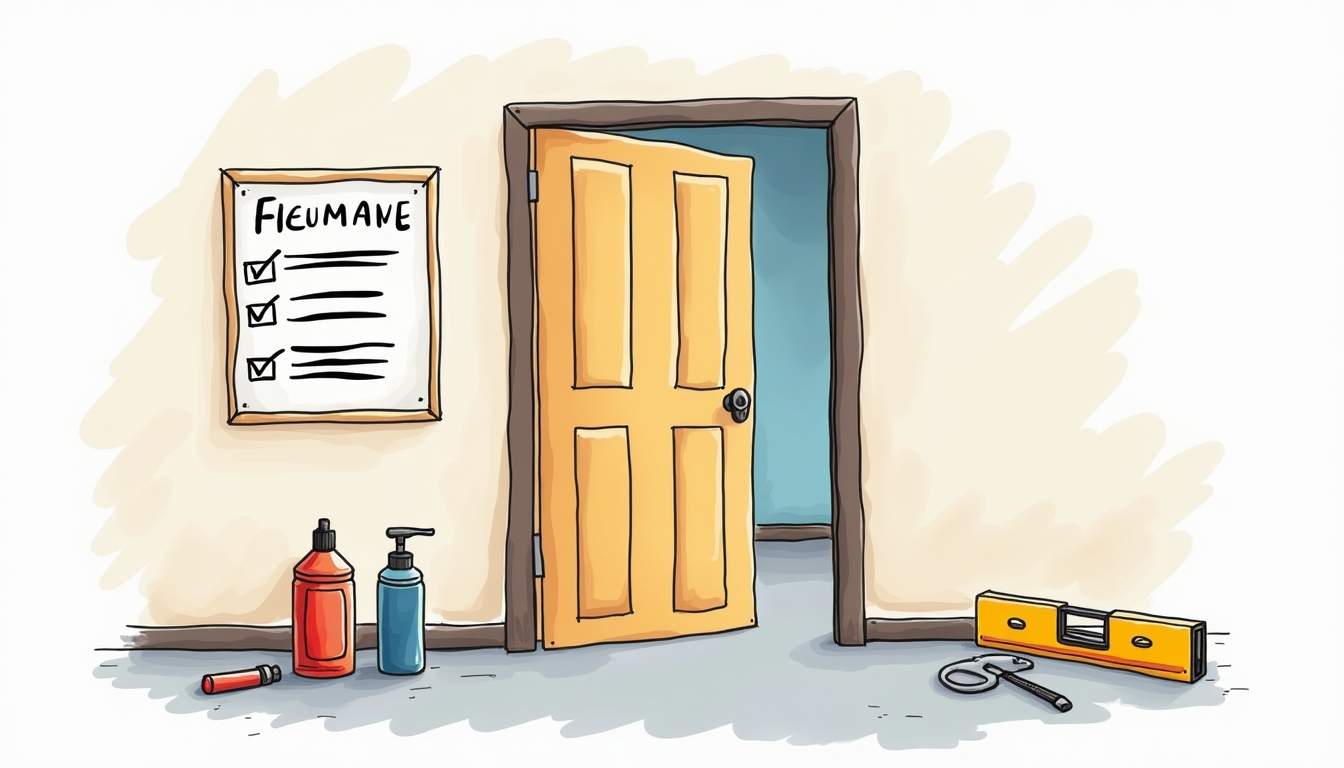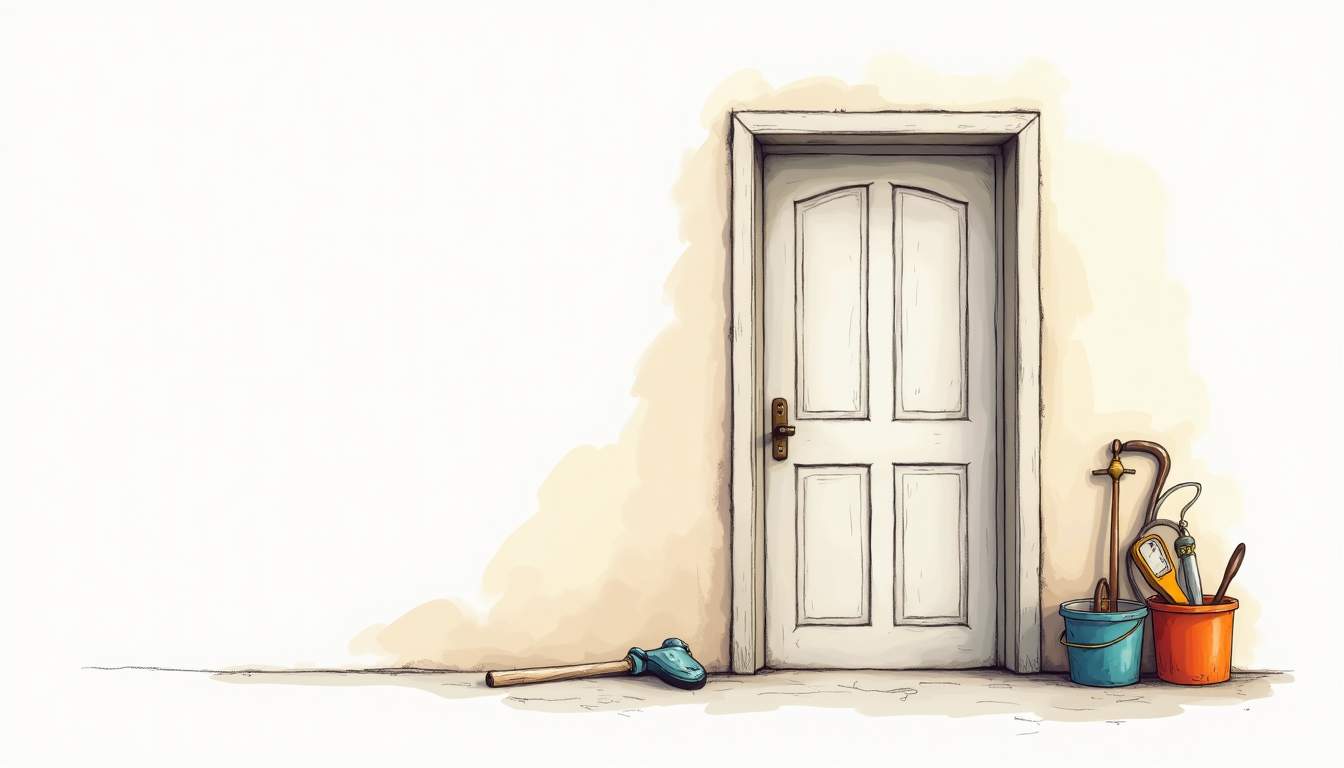
Doors are essential components of any building, providing security, privacy, and protection from the elements. But when a door suddenly breaks, jams, or becomes damaged, it can quickly turn into a stressful emergency. Whether it’s a broken lock, a warped frame, or a door that won’t close properly, emergency door repairs require prompt attention to restore safety and functionality.
This article explores what to expect when facing an emergency door repair, how professionals handle these situations, and practical steps you can take to minimize damage before help arrives. Understanding the process and being prepared can save time, reduce costs, and keep your property secure.
Common Causes of Emergency Door Repairs
Doors can fail or become damaged for many reasons. Identifying the cause is the first step in understanding the repair process and urgency.
Physical Damage from Forced Entry or Accidents
One of the most frequent reasons for emergency door repairs is physical damage resulting from forced entry attempts or accidental impacts. Burglars or vandals may try to break locks or kick doors open, causing splintered wood, bent metal frames, or damaged locking mechanisms. Similarly, accidents such as a car backing into a garage door or heavy furniture striking a door can cause sudden damage requiring immediate attention.
Such damage not only compromises security but can also make the door unusable or unsafe, necessitating quick repairs or replacement. In many cases, homeowners may also find that the damage extends beyond the door itself, affecting surrounding structures like walls or thresholds. This can lead to additional repair costs and time, emphasizing the importance of addressing any damage promptly to prevent further complications.
Lock Malfunctions and Key Breakage
Lock failures are another common cause of emergency door repairs. Keys can break inside locks, locks can jam due to wear or weather conditions, or electronic locking systems can fail unexpectedly. Being locked out or unable to secure a door can pose safety risks, especially during nighttime or in unsafe neighborhoods.
Emergency locksmith services are often called in these situations to extract broken keys, repair or replace locks, and restore secure access. Additionally, it’s worth noting that some modern locks come equipped with features that allow for remote access or smartphone integration, which can also malfunction. Users may find themselves locked out not just due to physical damage but also due to software glitches or battery failures, highlighting the need for a reliable backup plan for securing entry points. For professional help and reliable solutions, consider a visit LockSmith Singapore to ensure your locks and security systems are always in top condition..
Weather-Related Damage
Severe weather events such as storms, high winds, or flooding can cause doors to warp, swell, or become misaligned. Water damage can weaken door frames and cause paint or finish to peel, while wind pressure can cause doors to slam shut or pop open unexpectedly. In colder climates, freezing temperatures may cause door components to contract or ice to form, leading to jams.
Prompt repairs are crucial to prevent further deterioration and maintain the building’s weatherproofing and insulation. Homeowners should also consider the long-term effects of weather on their doors, such as the importance of regular maintenance and inspections. For instance, applying weather stripping or sealants can greatly enhance a door’s resilience against the elements, reducing the likelihood of emergency repairs in the future. Additionally, investing in high-quality materials that are designed to withstand specific climate conditions can save time and money in the long run, ensuring that doors remain functional and secure regardless of the weather challenges they face.
What to Expect During an Emergency Door Repair Service
When you call a professional for emergency door repair, understanding the typical process can help set expectations and reduce anxiety.
Rapid Response and Assessment
Emergency repair services prioritize quick response times, often arriving within hours or even minutes depending on the situation and location. Upon arrival, the technician will conduct a thorough assessment of the door, frame, locks, and surrounding structures to determine the extent of the damage.
This evaluation helps identify whether a simple fix can restore functionality or if more extensive repairs or replacements are necessary. The technician will also check for any safety hazards such as broken glass, exposed nails, or compromised security features.
Temporary Solutions to Secure the Property
In many cases, the immediate goal is to secure the property to prevent unauthorized access or further damage. This may involve installing temporary locks, reinforcing damaged frames, or boarding up broken glass. These stopgap measures provide peace of mind until permanent repairs can be completed.
Technicians often carry a variety of tools and materials to implement these temporary fixes quickly and effectively.
Repair or Replacement Options
Depending on the damage, the technician will recommend either repairing the existing door or replacing it entirely. Minor issues like misaligned hinges, broken locks, or small cracks can usually be repaired on the spot. However, severe structural damage, warping, or irreparable lock mechanisms may require door replacement.
Professionals will discuss available options, costs, and timelines with the property owner to determine the best course of action.
Professional Tools and Techniques
Emergency door repair specialists use specialized tools such as lock pick sets, power drills, pry bars, and precision measuring devices. Advanced techniques like rekeying locks, frame reinforcement, and weatherproof sealing are common parts of the repair process. Their expertise ensures repairs are done efficiently and to a high standard.
How to Minimize Damage Before Help Arrives
While waiting for professional assistance, there are several steps you can take to reduce further damage and keep yourself safe.

Secure the Area and Avoid Forcing the Door
If the door is damaged or jammed, avoid forcing it open or closed as this can worsen the problem. Forcing a stuck door may break hinges, splinter wood, or damage locks further. Instead, keep the door closed and locked if possible, or keep it open if that’s safer.
Ensure children and pets stay away from the damaged door to prevent injuries from sharp edges or broken glass.
Protect Against Weather and Intruders
If the door is broken and cannot be secured, use temporary barriers such as plywood, heavy blankets, or tarps to cover gaps and protect against weather elements. This also helps deter intruders by making entry more difficult.
Use furniture or other heavy objects to block doorways if necessary, but be mindful of fire safety and emergency exit routes.
Document the Damage for Insurance Purposes
Take clear photos or videos of the damage before any repairs begin. This documentation can be valuable for insurance claims or legal purposes, especially if the damage resulted from a break-in or accident.
Keep any receipts or records related to emergency repairs for future reference.
Gather Necessary Information for the Repair Service
When calling for emergency repair, have important details ready such as the type of door, lock brand, nature of the damage, and any relevant access instructions. This helps the technician come prepared with the right tools and parts, speeding up the repair process.
Preventative Measures to Avoid Emergency Door Repairs
While emergencies can’t always be avoided, regular maintenance and proactive care can reduce the likelihood of sudden door failures.

Routine Inspection and Maintenance
Regularly inspect doors for signs of wear such as loose hinges, cracks, rust, or peeling paint. Lubricate locks and hinges to keep them functioning smoothly, and tighten any loose screws or bolts. Addressing minor issues promptly can prevent them from escalating into emergencies.
Upgrade to Durable and Weather-Resistant Materials
Consider installing doors made from sturdy materials like solid wood, steel, or fiberglass that offer better resistance to damage and weather conditions. Weatherstripping and seals can improve insulation and protect door components from moisture and temperature extremes.
Enhance Security Features
Invest in high-quality locks, deadbolts, and security systems to deter break-ins and reduce forced entry damage. Reinforced frames and strike plates add extra strength to vulnerable areas of the door.
Educate Occupants on Proper Use
Ensure everyone in the household or building knows how to properly operate doors and locks to avoid accidental damage. For example, avoid slamming doors, forcing keys, or propping doors open unnecessarily.
Choosing the Right Emergency Door Repair Service
Selecting a reliable and experienced emergency door repair service is crucial for effective and timely repairs.
Look for Licensed and Insured Professionals
Always choose repair companies or locksmiths who are licensed, insured, and bonded. This protects you from liability and guarantees a certain level of professionalism and quality.
Check Reviews and References
Read customer reviews and ask for references to gauge the reputation and reliability of the service provider. Positive feedback and proven experience in emergency repairs are good indicators of trustworthy professionals.
Availability and Response Time
Emergencies require fast action, so select a company that offers 24/7 service and guarantees quick response times. Confirm their average arrival time and whether they have technicians available in your area.
Transparent Pricing and Estimates
Request clear pricing information upfront and avoid companies that provide vague or excessively high estimates. A reputable service will offer a fair quote after assessing the damage and explain any additional costs.
Conclusion
Emergency door repairs can be stressful and disruptive, but knowing what to expect and how to minimize damage can make the process smoother and less costly. Prompt professional assessment, temporary securing measures, and careful documentation are key steps in handling door emergencies effectively.

Regular maintenance and security upgrades also play a vital role in preventing emergencies before they happen. By choosing the right repair service and taking proactive measures, property owners can ensure their doors remain safe, functional, and durable for years to come.